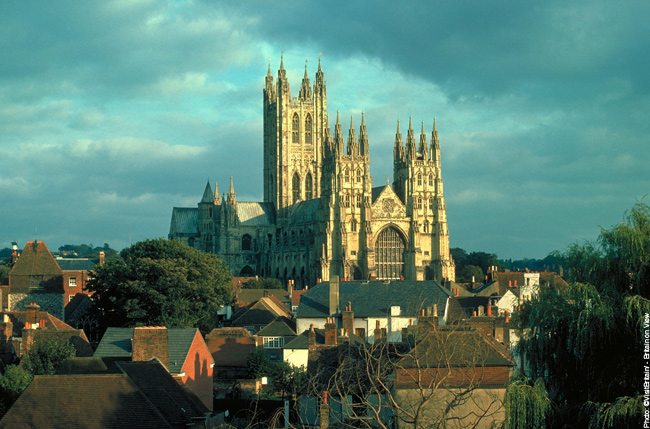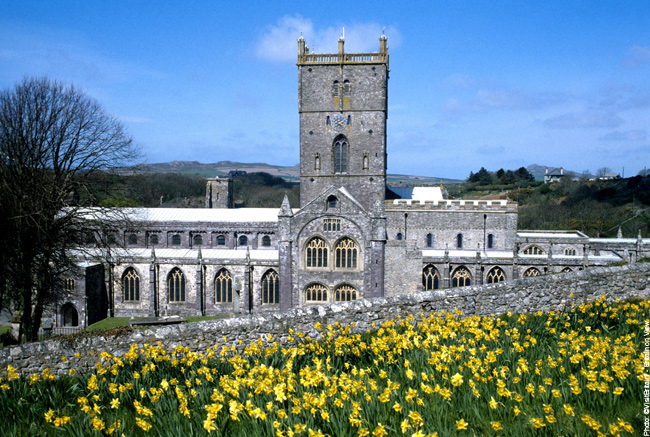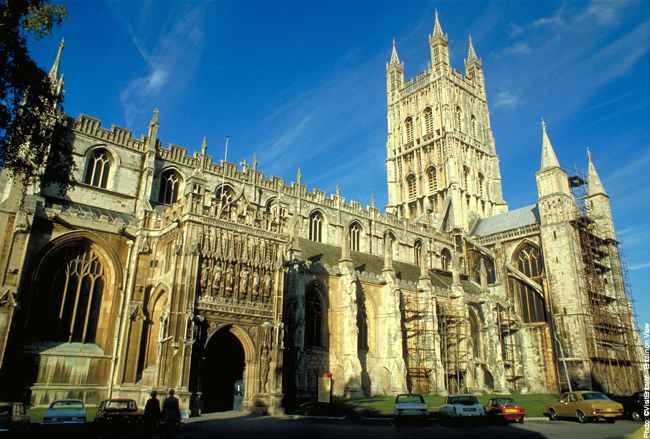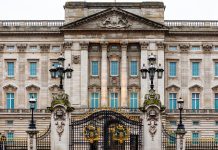You don’t have to be religious to believe that Britain’s cathedrals are the country’s greatest buildings, from the great medieval cathedrals to the Baroque brilliance of St Paul’s

A cathedral is a bishop’s church, where the bishop’s throne is sited; and the heart of the bishop’s diocese, or see. In medieval England there were 19 cathedrals in 17 sees of varying sizes, within the two provinces of the archbishops of Canterbury and York. Some were secular cathedrals, where the clergy lived around and worked in cathedrals run by chapters, a sort of council of canons, headed by the Dean, one step below the bishop; while the rest were monastic, in which communities of monks were led by a prior under the command of the bishop. There was also a third group of medieval English cathedrals, the great churches, usually large religious houses that became cathedrals during or following the Reformation.
There is no room in a mere magazine article to do justice to the variety of architectural fascination, or the near limitless examples of individual beauty teased out of stone, wood and metal by generations of exceptionally talented craftsmen in these buildings. The stained glass alone deserves a library of books (although, if you want a crash course, you could visit York Minster, to see perhaps the richest collection of wonderful examples from the 12th to the 15th centuries.
Instead, I simply hope to nurture the enthusiasm so many of us seem to acquire the first time we visit any of these great buildings and to inspire you to visit more of them.
Canterbury is the seat of the country’s senior archbishop as a result of St Augustine’s mission to pagan Anglo-Saxon England at the end of the 6th century ad. In 602, Augustine founded bishoprics in Canterbury, London and Rochester. The most impressive of the cathedrals built during the Anglo-Saxon period was the Old Minster (a Minster is a church) at Winchester. None of it now survives above ground, but if you visit the present cathedral you’ll see the outline of its predecessor marked out on the lawn alongside it, illustrating its impressive scale.
During the 40 years after the Norman Conquest in 1066, all 15 of the cathedrals founded under the Saxons were substantially rebuilt. You can still see evidence of this today, including part of the huge West Front at Lincoln, where five huge Romanesque arches survive from the 11th-century building, now surrounded by the pointed arches and spires of the Gothic cathedral built around it in the 13th century.

A beautiful example of the late Norman transitional style, is the nave at St Davids in Pembrokeshire, the most beautiful of the cathedrals of Wales. The nave has wide rounded, delicately-decorated arches, begun in the late 12th century under the supervision of Bishop Peter de Leia and the great writer and scholar Gerald of Wales. The cathedral is small but immensely beautiful, sited in a hollow in the landscape to hide it from Viking ships at sea.
Most medieval cathedrals housed shrines to at least one saint, usually a venerated former bishop, like Swithun at Winchester or Cuthbert at Durham. From the 12th century, the cults of these saints became more popular and the shrines housing their bodies became more lavish.
The most important was that of Thomas Becket, the most famous of all Archbishops of Canterbury, murdered in 1170, in his cathedral, by three knights who believed they were carrying out the wishes of King Henry II. When Canterbury’s old Choir burned down in 1174, the monks built a new east end to house Becket’s tomb and today you can still get a good idea of the pilgrims’ progress through the cathedral towards the shrine, passing along a series of aisles and up flights of steps until they reached a fabulous space full of colour and intricate stained glass and tiling.
At Gloucester, the cathedral was rebuilt to accommodate what could have become a saint’s tomb: that of the deposed King Edward II, murdered at Berkeley Castle in 1327.
Although Edward was never canonised, the setting of his tomb remains one of the most beautiful in any cathedral.
It is a memory of this part of the building to which Dr David Stancliffe, recently retired as Bishop of Salisbury, turns when asked about his favourite places in English cathedrals. His first visit here was at the age of three or four, when his father was a curate at nearby Cirencester.
“It was a December evening, so the sun was setting at about four. I can remember walking past those big drum-like columns, through the undercroft of the cathedral, which was very dark, then through the screen into the light of the Choir. And I can remember seeing the light from the setting sun catching the angels on the roof.”
During the 13th century, Gothic really took hold of English cathedral architecture. The first half of the 14th century brought yet more significant architectural achievements, such as the amazing Octagon at Ely, a massive central lantern resting on a majestic web of ribbed ceiling vaults of stone and wood, between which hang great stained glass windows. At the Choir in Gloucester, completed in the 1330s, you can admire the delicate use of light, glass and space between ever more slender bars, struts and pillars. This was the start of the Perpendicular period, as seen in the breathtakingly beautiful naves at Winchester, or Gloucester’s achingly picturesque central tower.

For Dr David Stancliffe, the great cathedrals are at their most effective when the form of the building and the relationship between the different spaces within it has not been disrupted by rebuilding. “At Gloucester and at Canterbury each space leads you into the next one. You get a wonderful discovery of a place and then you are pushed into the next one.” He gained an insight into the way the great cathedrals were designed when helping to complete the rebuilding of Portsmouth Cathedral during the 1980s.
“We were able to think about the liturgy and worship and how we would use the spaces to take people on a journey.”
You need only consider for a few moments the limited technological resources available to the architects, builders and craftsmen who built the medieval cathedrals – the wooden scaffolding, hand tools, the boats that brought the stones from quarries to the building sites – to appreciate what a staggering achievement the cathedrals represent.
Things did not always go to plan. The Octagon at Ely replaced a Norman tower that fell into the cathedral in 1321; while if you stand at the bases of the pillars below the tower at Salisbury and look up you’ll see that the pillars bend alarmingly, the result of an extra 6,500 metric tonnes of weight bearing down upon them when the spire was added above.
“However,” says Dr David, “Because we’re so used to thinking of the extraordinary spire at Salisbury, we don’t always notice that there are two churches here, one on top of another. If you look up, you’ll see how the upper church, a richer and more decorated space with its carved heads, springing foliage and criss-crossing vaults sits on top of the plainer columns and arches of the nave and aisles. Our forebears didn’t do convenience buildings: they built to remind people that there was a world beyond the practical and utilitarian.”
The age of the great cathedrals ended with the English Reformation of the 1530s, when the largest monasteries, including the ten monastic cathedrals, were dissolved, their treasure and fittings, accumulated over centuries, confiscated, destroyed or melted down. Most of the medieval paintings that adorned many of the churches were lost forever.

London’s Old St Paul’s, one of the largest of all the cathedrals, crowned with a huge tower and spire was destroyed by the Great Fire of London in 1666, but the city gained another iconic building instead: Sir Christopher Wren’s baroque masterpiece, the current St Paul’s Cathedral.
It took 35 years to build from 1675, in white Portland stone and is reminiscent, in its dome and the sheer size of its interior spaces, of St Peter’s in Rome. The dome is 365 feet high and was until 1962 the tallest building in London. During the Second World War its seemingly miraculous survival amid night after night of bombing was an important morale-boosting sight for Londoners.
The changes in population resulting from the industrial revolution led to the creation of a series of new dioceses and cathedrals in the 19th and 20th centuries. The new cathedrals included many of the great medieval churches, such as St Albans, which became a cathedral in 1878; some former parish churches upgraded to cathedrals in the new industrial cities, as in Manchester (1847), and some entirely new cathedrals, as at Liverpool and Guildford in the 20th century.
Some of the cathedrals created in the 19th and 20th centuries serve dioceses that were reconstituted after lying dormant for centuries. The diocese of Truro falls into this category, formed in 1876 and covering much of the same area as did the Anglo-Saxon diocese of St Germans, in eastern Cornwall, which would later come under the control of the cathedrals at Crediton and then Exeter, in Devon. The modern diocese redresses the balance, covering Cornwall, the Isles of Scilly and two parishes in Devon. Truro cathedral itself is an impressive yet charming example of Victorian Gothic architecture, built to evoke the great cathedrals of the past, with soaring pointed arches and vaults and a great central tower and spire, rising to a height of 245 feet (74 metres).
Wartime bombs destroyed the beautiful medieval church of St Michael, which had become Coventry’s cathedral in 1918, on the night of November 14th 1940. The shell of the gutted cathedral was preserved and still stands alongside its replacement, designed by Sir Basil Spence and opened by the Queen in 1956.
There is also another fascinating modern cathedral in southern England, at Guildford in Surrey, which became a Church of England diocese in 1927. Designed by Sir Edward Maufe, construction began in 1936, interrupted by the Second World War and completed, following a fundraising campaign, during which individuals could buy a brick inscribed with their name for two shillings and sixpence (12.5p), in 1961. In size, if not external appearance, it is reminiscent of the medieval cathedrals and is built on a prominent hill so visible for miles around.
But, in a way, it would actually be wrong to draw such a clear distinction between the ‘modern’ and the ‘ancient’ cathedrals, for they are all living buildings: ever-changing, with new altarpieces and sculpture commissioned each year. While they may be resting places for many of the great and the good of previous centuries, they are as much about the present and the future of the country as its past.
They are precious: the matchless creations of a thousand years of artistry, craftsmanship and faith.
Related articles
The real Downton Abbey: Highclere Castle
Six fascinating facts about Britain’s heritage cities
Britain’s greatest castles in pictures
Learn more about our kings and queens, castles and cathedrals, countryside and coastline in every issue of BRITAIN magazine!





 © 2024
© 2024